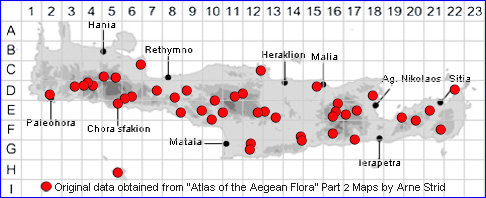
SPECIES DESCRIPTION
MEDICAGO RIGIDULA
Family and Genus:- See- LEGUMINOSAE/Subgen. CYMATIUM
Common Names:- None
Homotypic Synonyms:- Medicago agrestis, Medicago gerardi.
Meaning:- Medicago (Gr) Median-grass, A name used by the Greek physician
and botanist Dioscorides, from a Persian name for lucerne, or medick.
Rigidula (L) Quite stiff.
General description:- Densely pubescent annuals.
Stem:-
1) Up to 50 cm.
Leaves:-
1) Leaflets, obovate or obcordate, cuneate, denticulate, near the apex.
2) Stipules, ovate-lanceolate to narrowly lanceolate, incise-dentate or laciniate, in
the lower half.
Flowers:-
1) Racemes, 1- to 3(-5) flowered.
2) Corolla, 6-7 mm
Fruit:-
1) Legume, In a spiral of 4-7 turns, discoid to cylindrical, nearly always densely
glandular- pubescent, rarely glabrescent, nearly always spiny; transverse
veins strongly curved, scarcely anastomosing; submarginal veins at first
separated from the marginal vein by a shallow groove, becoming confluent wit
it and forming a convex margin when fully ripe.
a) Spines, usually about half as long as the diam., of the legume, somewhat
curved, uncinate.
Key features:-
1) Calyx-teeth, pubescent.
2) Legume, discoid to cylindrical; transverse veins scarcely anastomosing.
Habitat:- Fallow fields, roadsldes and steppe-like habitats, usually 0-1100 m,
occasionally to subalpine levels in Crete and mainland Greece.
Distribution:- Fairly common throughout Peloponnisos, mainland and Ionian
Islands. - Medit. region and SW Asia eastwards to Afghanistan; very variable.
Widespread across Crete.
Flowering time:- Apri-June.
Photos by:- A. N. Other
